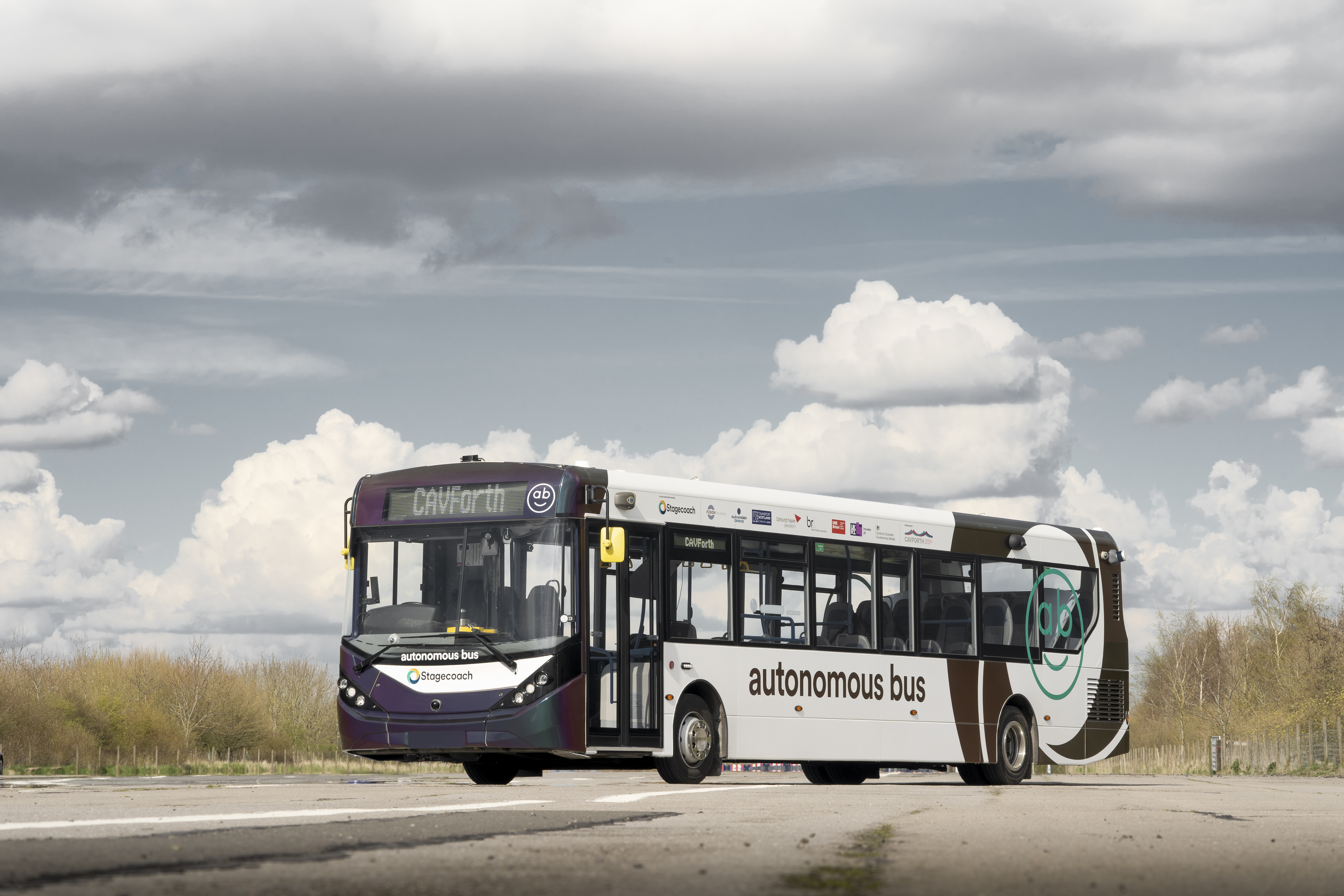
Scotland’s ambitious bus trial will inform future projects on autonomous public transport
Join other savvy professionals just like you at CIHT. We are committed to fulfilling your professional development needs throughout your career

How will public transport work in a world of autonomous vehicles? It’s a big question, and a six-month trial hoping to answer that by capturing some real-world data is about to get under way in Scotland, starting later this year.
Justin Ward, CIHT’s head of policy and technical, spoke to Andrew Davidson and Stephen Davies from Transport Scotland about all the ins and outs of Project CAVForth.
Justin Ward: Is this a world first?
Andrew Davidson: We certainly believe this to be the largest trial of its kind anywhere in the world. A fleet of autonomous buses will run on a 14-mile route (including the M90, M9 and M8 motorways) between Fife and west Edinburgh, using part of the Public Transport Corridor across the Forth Road Bridge. Everything is designed to get people out of their cars, starting at a park and ride and ending at a multimodal interchange.
Stephen Davies: Given the length of the route, the fact that fare-paying customers will be on board, and that it will be running in mixed motorway traffic at speeds of up to 50mph, we believe Project CAVForth to be a globally significant trial of autonomous bus operations and technologies. And while there are elements that have been done elsewhere, no other project has brought them together at this scale before.
AD: Transport Scotland is just one of the six partners delivering Project CAVForth. Two-thirds of the funding is coming from the Centre for Connected and Autonomous Vehicles (CCAV), and the partnership is being led by Fusion Processing, which is developing the autonomous technology alongside the Bristol Robotics Laboratory. Alexander Dennis Ltd has built the buses, and the service will be run by Stagecoach. Edinburgh Napier University will also be undertaking some societal research.
JW: What has been involved in getting it on the road?
AD: Transport Scotland has recognised that if autonomous vehicles are to be a future mobility option, any required road improvements and upgrades should be kept to a minimum. As a sector, we cannot start completely re-engineering our roads just to accommodate autonomous vehicles.
That said, for this trial we refreshed all road markings on the route and introduced an actively managed bus lane through road widening. This will provide a journey time advantage for the buses during peak times, as well as providing wider benefits.
We’ve also put in full CCTV coverage to allow us to monitor operations in real time, plus some V2I technology to allow the buses to access our roadside and gantry-mounted variable message signs. Some technological improvements have also been brought forward in our Traffic Scotland National Control Centre.
SD: We have also upgraded all traffic signals on the route to make them “communicable”. This was quite an innovative element, as it allows our traffic signals to connect and communicate their status directly with the autonomous buses. We worked closely with Fusion Processing and our supply chain to ensure that the solution is fully secure.
JW: Can you tell us more about the operations planning?
SD: In effect, we’ve done the infrastructure work; now we’re working with project partners and other key stakeholders such as Police Scotland to develop the operations side. For example, we’ll be able to download data from a bus if there is an incident and review that.
Ongoing operational monitoring of the service will be done from the Traffic Scotland National Control Centre. We will agree procedures for daily reporting, control and monitoring, and we’ll share this with our partners.
It is probable that, at the start of the trial period, the service will not be fully autonomous along the entire route, and we will adapt our operations as the trial moves to a greater level of autonomy. External factors such as weather conditions, traffic management, and incidents on the network might affect operational planning as well.
JW: What do you think the outcomes will be?
AD: All the project partners will learn a huge amount from the trial. For example, the project’s lead partner, Fusion Processing, will be looking at how it can exploit the technology. Fusion has done a huge amount of development and testing to make the CAV systems safe, robust and reliable.
Meanwhile, as a road authority, we at Transport Scotland are hoping to get an understanding of how an autonomous vehicle operates within live traffic and in different road conditions, and we’ll share that insight with roads authorities in Scotland, elsewhere in the UK and further afield.
Stagecoach will be considering the role of automated vehicles in the future of public transport, and Alexander Dennis will gain an understanding of how autonomous technologies can be built into production vehicles. Edinburgh Napier University will be doing social research around public transport usage, and the Bristol Robotics Lab will be learning how real-life operations compare with the simulation.
It’s all theoretical at the moment, but from later this year, we’ll start to get an understanding of how this will work on live roads. There’s no guarantee it will be a success, but all our partners are working hard to make it so.
{{item.AuthorName}} {{item.AuthorName}} says on {{item.DateFormattedString}}: